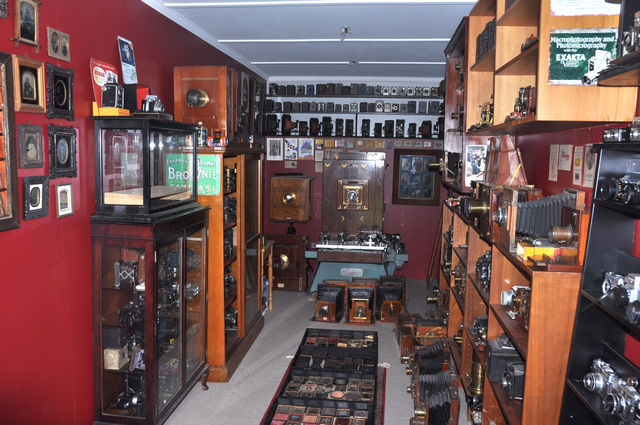Friday Focus: Brian Scadden – wet plate pioneer
By Christopher Osborne,
Silvergrain Classics – the analogue photography magazine.
In this week’s Friday Focus we talk to New Zealand wet plate photographer Brian Scadden.

Brian’s collecting expanded to ambrotypes, tintypes and daguerreotypes which mostly came from the US and Britain. There are only around a dozen surviving examples of New Zealand daguerreotypes even though 19th Century newspaper records show that there were photographers using the process to make portraits in New Zealand. He wonders if the low survival rate can be partially attributed to the images being discarded so that the cases could be recycled as cigarette cases.
The lucky break came when Australian photographer Sandy Barrie visited the photography group in Wellington. After his talk, Sandy spent time talking to Brian and offered suggestions on where his chemistry could be changed. Use purer alcohol and make collodion from scratch were the main points.



There was an immediate improvement in the images, and Brian was off. He started making landscapes and to start with these had to be taken within minutes of his house.
Shortly afterwards he was contacted by the Osterman’s, who were able to offer further advice on wet plate formulas. It turned out that the book which Brian had been relying on for his early attempts at wet plate was rather unreliable according to Mark and France Osterman.


He travelled to the US in 2006 with a self-built ½ plate camera. The plate holder was made in the English style where the darkslide is hinged and folds down over the camera when it is retracted. This stops the darkslide acting like a sail in the wind. He met up with American wet-plater friend Will Dunniway and drove to a native Indian reservation at Union Pass Wyoming where they made a series of images recording historic native American costumes.
Brian (and his wife Jane) run courses teaching wet plate. They aim to impart both a historical background and the technique of making good plates. Brian points out that there are very few blemishes on historical plates, and that the current plates with oysters and veiling are historically inaccurate. They both laugh, and tell me about a recent student who was so upset that her plates were coming out perfectly that she made artefacts around the edges with cotton wool!

We have a small favour to ask. We want to make these online articles free to the world. We see it as our contribution to the photographic community. You can help by subscribing to our awesome analogue photography magazine at https://shop.silvergrainclassics.com/subscriptions/
